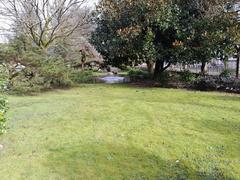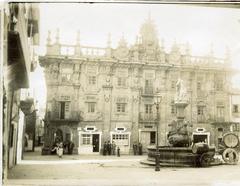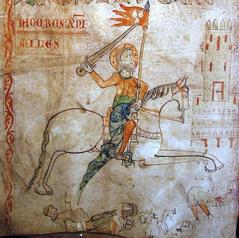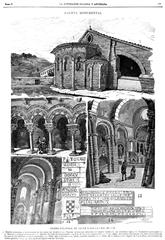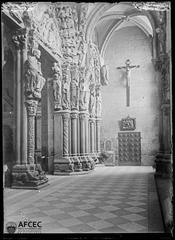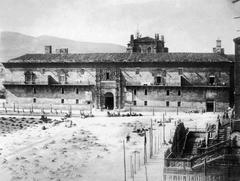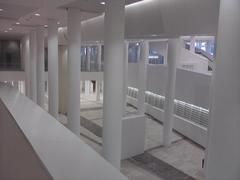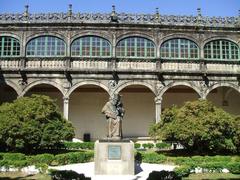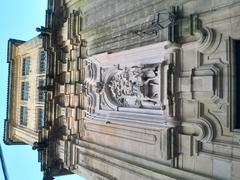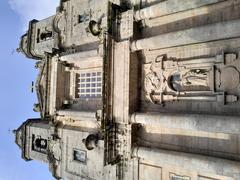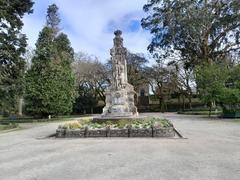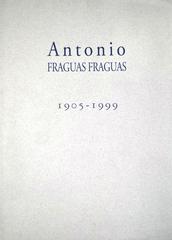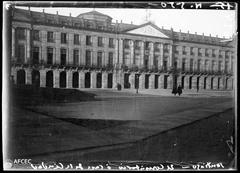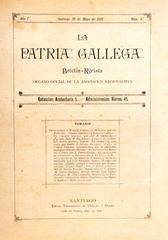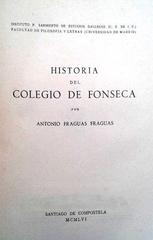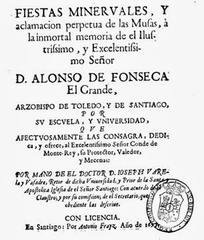Visiting the Royal Pantheon of Santiago de Compostela, Spain: Tickets, Hours, and Expert Tips
Date: 04/07/2025
Introduction: Discovering the Royal Pantheon of Santiago de Compostela
The Royal Pantheon of Santiago de Compostela stands as one of Spain’s most significant royal and religious monuments, housed within the iconic Cathedral of Santiago de Compostela. As a royal burial chamber, it encapsulates centuries of Galicia’s medieval heritage, ecclesiastical influence, and dynastic legacy. Established officially in 1107, the Pantheon serves as the final resting place for monarchs, nobility, and eminent church leaders who shaped the history of Galicia and León (Nomads Travel Guide; Google Arts & Culture; Marly Camino).
Blending Romanesque, Renaissance, and Baroque elements, the Pantheon is a treasure trove for lovers of history and architecture. This guide provides essential information on the Pantheon’s origins, notable burials, visiting hours, ticketing, accessibility, and travel tips—ensuring you get the most out of your visit (Caminosantiago.gal; Catedral de Santiago de Compostela).
Table of Contents
- History and Significance of the Royal Pantheon
- Origins and Historical Context
- Architectural Evolution and Location
- Notable Interments: Monarchs, Nobility, and Ecclesiastics
- Visiting Information: Hours, Tickets, and Access
- Visitor Experience: Guided Tours, Photography, and Etiquette
- Nearby Attractions & Travel Tips
- Frequently Asked Questions (FAQ)
- Conclusion: Planning Your Visit
- References
History and Significance of the Royal Pantheon
The Royal Pantheon is a unique funerary space, originally conceived as a burial site for monarchs and influential figures central to the development of medieval Galicia and León. Its creation reflects the rise of Santiago de Compostela as a major spiritual and political center, particularly after the 9th-century discovery of the tomb of Saint James the Greater (Nomads Travel Guide). Over the centuries, the Pantheon has been both a symbol of royal legitimacy and a testament to the enduring power of faith and monarchy in Spain.
Origins and Historical Context
The Pantheon’s history begins in the early 9th century, when the discovery of Saint James’ tomb transformed Santiago de Compostela into a leading Christian pilgrimage site, rivaling Rome and Jerusalem. The site’s evolution from a simple Roman cemetery to a royal necropolis paralleled the city’s rise in status. In 1107, the burial of Raymond of Burgundy, Count of Galicia, formalized the Pantheon’s role as a royal mausoleum (Wikipedia).
Architectural Evolution and Location
Originally located in the area now known as the Chapel of Santa Catalina, the Pantheon was relocated in 1535 to the Chapel of the Relics during Renaissance renovations. Today, visitors can admire its blend of Romanesque, Renaissance, and Baroque styles, including a wrought iron gate, Baroque altar, and marble sarcophagi with sculpted effigies and heraldic designs (Google Arts & Culture; Caminosantiagocompostela.com).
Notable Interments: Monarchs, Nobility, and Ecclesiastics
The Pantheon enshrines the remains of several prominent historical figures:
- Raymond of Burgundy (1065–1107): Count of Galicia, father of Alfonso VII, and key figure in the Christian reconquest.
- Pedro Froilaz de Traba (c. 1075–1126): Influential noble and mentor to Alfonso VII.
- Berenguela Berenguer (1108–1149): Queen consort.
- Fernando II of Galicia and León (1137–1188): Patron of the cathedral who established the Pantheon as a royal burial site.
- Alfonso IX of Galicia and León (1171–1230): Last independent monarch of Galicia and León, champion of the cathedral and pilgrimage routes.
- Juana de Castro (d. 1374): Briefly queen consort, her burial extends the Pantheon’s significance into the later Middle Ages (Google Arts & Culture).
- Ecclesiastical Figures: Bishops and archbishops who played pivotal roles in the cathedral’s history (Caminosantiagocompostela.com).
The Pantheon’s royal tombs are adorned with intricate effigies and heraldic motifs, highlighting the fusion of dynastic power and religious devotion.
Visiting Information: Hours, Tickets, and Access
Location: The Royal Pantheon is located within the Cathedral of Santiago de Compostela’s cloister, accessible via the Chapel of the Relics (Catedral de Santiago de Compostela).
Visiting Hours
- Museum (including Royal Pantheon): 10:00 AM – 8:00 PM daily.
- Cathedral Basilica: 7:00 AM – 9:00 PM.
- Note: Hours may vary on holidays or special occasions. Always check the official website before your visit.
Tickets and Admission
- Cathedral Entry: Free (main nave, chapels, and crypt).
- Museum Ticket (includes Pantheon): €6–€12 (varies by tour/areas). Reduced rates for students, seniors, and groups; children under 12 often enter free with an adult.
- Purchase: Tickets can be bought online or at the museum entrance. Advance booking is advised during peak seasons.
Accessibility
- Mobility: Ramps and elevators are available, but some areas have stairs or uneven surfaces due to historic architecture.
- Assistance: Staff can provide guidance; accessible routes are marked where possible.
Visitor Experience: Guided Tours, Photography, and Etiquette
Guided Tours and Special Events
- Guided tours offer in-depth historical context and access to restricted areas. Available in multiple languages; book in advance via the official site.
- Special Events: The Pantheon occasionally hosts liturgical ceremonies and unique tours during Holy Years and feast days.
Photography and Etiquette
- Photography: Non-flash photography is generally allowed, but always check signs or ask staff.
- Conduct: Dress modestly (shoulders and knees covered), maintain silence, and respect the sanctity of the site. Large bags are not permitted; cloakroom services are available.
Nearby Attractions & Travel Tips
- Cloister: Renowned for its Plateresque style, included with the museum ticket.
- Portico of Glory: A Romanesque masterpiece, accessible via special tours.
- Obradoiro Square: The city’s central plaza, full of lively pilgrim activity.
- Old Town: A UNESCO World Heritage Site with winding medieval streets.
- Hostal de los Reyes Católicos: A former pilgrim hospital, now a historic hotel.
- Museum of the Galician People: Offers insights into regional culture and history.
Travel Tips:
- Visit early or late in the day for a more tranquil experience.
- Combine your visit to the Pantheon with other cathedral highlights.
- Download the Audiala app for audio guides, interactive maps, and personalized tips.
Frequently Asked Questions (FAQ)
Q: What are the visiting hours for the Royal Pantheon?
A: Typically 10:00 AM to 8:00 PM as part of the cathedral museum. Check the official site for current schedules.
Q: How much do tickets cost?
A: Museum tickets including Pantheon access range from €6–€12, with discounts available.
Q: Are guided tours available?
A: Yes, tours in several languages can be booked in advance and are highly recommended for context.
Q: Is the Royal Pantheon accessible for people with disabilities?
A: Most areas are accessible, but some historic sections have stairs or uneven floors. Contact staff for assistance.
Q: Can I take photos inside?
A: Non-flash photography is generally allowed, but restrictions may apply in certain areas.
Conclusion: Planning Your Visit
The Royal Pantheon of Santiago de Compostela is an essential destination for anyone passionate about Spain’s medieval past, royal history, or sacred architecture. From its storied tombs and exquisite artistry to its role in the cultural identity of Galicia, the Pantheon offers a profound journey into the heart of Spanish heritage.
Key planning points:
- Check current hours and ticket options on the official cathedral website.
- Book guided tours for a richer experience.
- Wear respectful attire and plan for accessibility needs.
- Enhance your visit with the Audiala app for audio guides and up-to-date travel information.
Whether you’re a pilgrim, history enthusiast, or cultural explorer, a visit to the Royal Pantheon is sure to leave a lasting impression.
References
- Royal Pantheon Santiago de Compostela: History, Visiting Hours, Tickets & Visitor Guide, 2024, Nomads Travel Guide (Nomads Travel Guide)
- Discover the Royal Pantheon in Santiago de Compostela: Visiting Hours, Tickets, and Historical Insights, 2024, Google Arts & Culture (Google Arts & Culture)
- Royal Pantheon of Santiago de Compostela: Visiting Hours, Tickets, and History of Monarchs Buried, 2024, Marly Camino (Marly Camino)
- Royal Pantheon Visiting Hours, Tickets & Insider Guide to Santiago de Compostela Historical Site, 2024, Catedral de Santiago de Compostela Official Website (Catedral de Santiago de Compostela)
